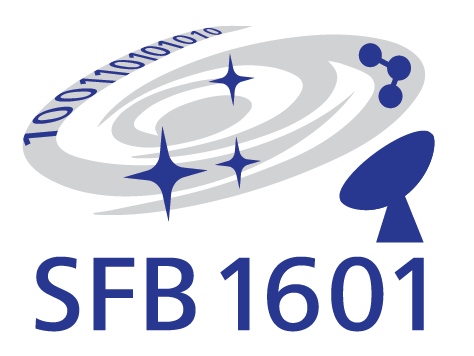Within the SFB 1601, researchers are investigating the physical processes that determine the habitats of massive stars in different galactic environments.
Due to their short lifetime and high energy output, massive stars drive the evolution of galaxies across cosmic time. Therefore, they contribute substantially to shaping the present-day Universe. Habitats are the gaseous environments in which massive stars are born and which they interact with via their feedback.
In the SFB 1601 detailed knowledge of massive star formation in the Milky Way are connected with that of the early epochs of the Universe. We aim to connect the physical processes that govern the habitats of massive stars across a broad range of environments to Mpc scales and from the Milky Way to the high-redshift Universe, where massive stars leave their cosmological fingerprint by driving cosmic reionisation.
SFB 1601 aims to close two major gaps in our understanding of the habitats of massive stars:
– The spatial scale gap provides the missing link between sub-pc scale and galactic scale studies of massive star habitats.
– The environment gap describes the need to extrapolate the physics of star formation that is examined in detail in the Milky Way and the Magellanic Clouds to the extreme environments prevailing at high redshift.
These gaps are naturally connected, as the most extreme environments are rare and distant and therefore suffer from coarse resolution when observed from Earth. Both gaps are difficult to overcome due to the interconnected nature of the physical processes, which is why they are the subject of intense research in the international astronomical community. Bridging these gaps is only possible through a collaborative effort as in the SFB 1601, combining laboratory astrophysics, instrument development, observations, and theoretical modeling/simulations.
All SFB partners have a strong profile as leading players in large international projects and have extensive experience in building and operating their own telescopes and developing state-of-the-art instruments in the infrared, submillimeter, and radio wave ranges. Astrophysics has been a strong scientific tie between the Universities of Bonn and Cologne since decades. The collaboration is documented by five, more or less successive SFBs, which have provided a major input to the strategic development planning of astrophysics at both Universities. CRC 956 just ended in December 2022, after a full financing over 12 years. The newSFB 1601 from UoC and UB, together with MPIfR and FZJ has started in October 2023.

